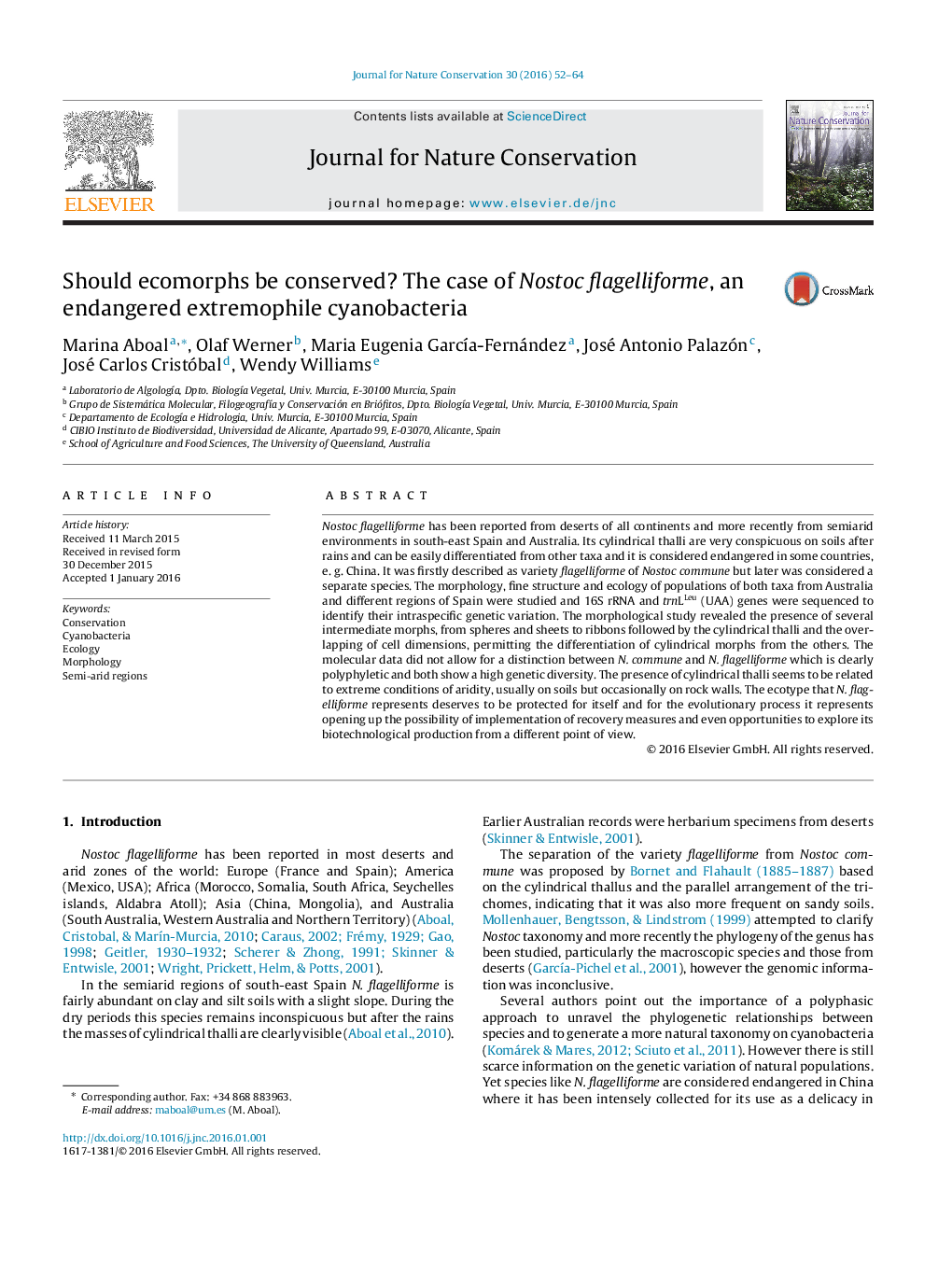| Article ID | Journal | Published Year | Pages | File Type |
|---|---|---|---|---|
| 4399721 | Journal for Nature Conservation | 2016 | 13 Pages |
Nostoc flagelliforme has been reported from deserts of all continents and more recently from semiarid environments in south-east Spain and Australia. Its cylindrical thalli are very conspicuous on soils after rains and can be easily differentiated from other taxa and it is considered endangered in some countries, e. g. China. It was firstly described as variety flagelliforme of Nostoc commune but later was considered a separate species. The morphology, fine structure and ecology of populations of both taxa from Australia and different regions of Spain were studied and 16S rRNA and trnLLeu (UAA) genes were sequenced to identify their intraspecific genetic variation. The morphological study revealed the presence of several intermediate morphs, from spheres and sheets to ribbons followed by the cylindrical thalli and the overlapping of cell dimensions, permitting the differentiation of cylindrical morphs from the others. The molecular data did not allow for a distinction between N. commune and N. flagelliforme which is clearly polyphyletic and both show a high genetic diversity. The presence of cylindrical thalli seems to be related to extreme conditions of aridity, usually on soils but occasionally on rock walls. The ecotype that N. flagelliforme represents deserves to be protected for itself and for the evolutionary process it represents opening up the possibility of implementation of recovery measures and even opportunities to explore its biotechnological production from a different point of view.
